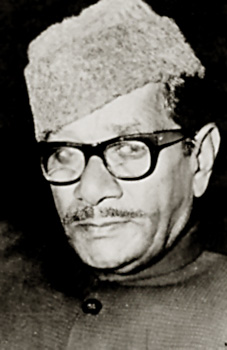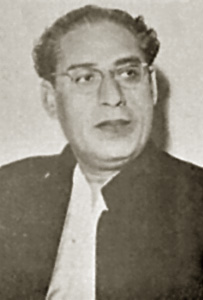 Types of khayal in Indian Classical Music are mainly of two types. These are the bara khayal and the chhota khayal. The two types of khayal performance are distinguished primarily by the basic level of speed at which they are sung and by the type of improvisation that follows the chiz. Bara khayal is sung in slow speed (vilambit laya) or medium speed (madhya laya). In slow speed, each count of the tala is divided into four beats; this can be heard clearly in the tabla part. In medium speed, each count of the tala is either subdivided into two beats or receives one beat. Chhota khayal is always in fast speed. It receives one beat per tala count but moves at a much faster clip than medium speed. Bara khayal is usually in tintal, tilwara tal, ektal, jhumra tal, or jhaptal; chhota khayal are almost invariably in tintal or ektal.
Types of khayal in Indian Classical Music are mainly of two types. These are the bara khayal and the chhota khayal. The two types of khayal performance are distinguished primarily by the basic level of speed at which they are sung and by the type of improvisation that follows the chiz. Bara khayal is sung in slow speed (vilambit laya) or medium speed (madhya laya). In slow speed, each count of the tala is divided into four beats; this can be heard clearly in the tabla part. In medium speed, each count of the tala is either subdivided into two beats or receives one beat. Chhota khayal is always in fast speed. It receives one beat per tala count but moves at a much faster clip than medium speed. Bara khayal is usually in tintal, tilwara tal, ektal, jhumra tal, or jhaptal; chhota khayal are almost invariably in tintal or ektal.
Bara khayal improvisation resembles the alap that precedes dhrupad: it begins slowly, explores the raaga in low register first, then moves upward. Although the tala is kept by the tabla player, who repeats and repeats the theka, and although the singer certainly knows where (s)he is in the tala cycle, the rhythm seems free and floating, as in unmetered alap. The recurrence of the mukhra functions as the mohra does in pre-dhrupad alap. Rather than singing vocal syllables, as in dhrupad alap, the singer uses the chiz text (the improvisation using the text is then called bolbant) or vowels. (S)he is usually careful not to use the text rhythmically, however, so (s)he changes syllables off the counts, says the words indistinctly, and sings many pitches to a single syllable. As the performance progresses, (s)he begins to lean to rhythm by interspersing in the improvisation passages of boltan, tans, and occasionally sargam. Passages of sargam use the solfege syllables as text. As a pitch is sung, it is named. The text enunciation emphasizes rhythm. Bolbant is considered a carry-over into khayal from dhrupad. It consists of a long phrase or sentence from the chiz text that is played upon to primarily rhythmic effect. The emphasis on the text in bolbant provides marked contrast with the wide use of vowels only (akar), in much khayal improvisation.
 As a bara khayal performance progresses, more and more tans are sung. Tans are very fast melodic figures that may (or may not) touch pitches not in the particular raaga. They are borne on the vowels of text syllables or on independent vowels.
As a bara khayal performance progresses, more and more tans are sung. Tans are very fast melodic figures that may (or may not) touch pitches not in the particular raaga. They are borne on the vowels of text syllables or on independent vowels.
Chhota khayal is rarely performed as a distinct entity. Usually, it follows a bara khayal, in the same raga but often in a different tala, without break as a continuation of the acceleration of the bara khayal. The chhota khayal chiz is presented quickly, and improvisation continues. Alap-type exploration of the raga can be dispensed with since it was present in the bara khayal. Chhota khayal improvisation is characterized by rapid passage work (tans), many repetitions of the first phrase of the sthal, a generally rhythmic orientation, and constant acceleration.
Occasionally, a khayal singer will substitute another form for the chhota khayal; the sequence will be bara khayal to tarana. The major difference between chhota khayal and tarana lies not in the composition, nor in the performance treatment, but in the text. Vocables are the major text rather than verse or prose, as in chiz. However, a tarana can sometimes include a a Persian couplet, but the couplet does not function as a chiz functions in khayal. One school of thought holds that the various combinations of vocables in tarana are not just meaningless vocables but are Persian word. Such poetry is said to be representative of the mystic school of poets, in which the beloved is the Almighty and the devotee is his lover. Thus, the poetry of tarana is spiritual, though romantic.
Some sources on Indian music say that pakhavaj bols are introduced into tarana as text, and indeed that does happen. The other vehicle for melody here is sargam (solfege syllables). Tarana are usually performed by artists who specialize in them. Nissar Hussain Khan, the late Amir Khan, and Krishna Rao Shankar Pandit are particularly well known for performance of tarana. To sing tarana requires skill in rhythmic manipulation Qayakari) and the ability to sing syllables rapidly. The Carnatic version of tarana, which is called tillana, is very similar and is said to have developed at about the same time.




